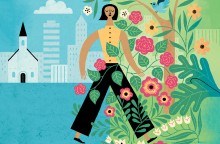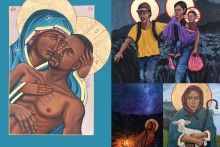Heirloom
In stores, my father would reach into his pocket with a big red
hand, offer to pay for his purchases with a fist full of beans,
explaining the economics of abundance: one seed makes one hundred.
I remember the confusion of the cashiers, our mortification.
In the old house he had a bean room snarled with vines, dried beans
in their pods, beans for the apocalypse, beans for the Great Tribulation,
beans for feasting and planting and surviving, beans for life and death.
Grow corn and beans, he said. Put no trust in mammon. Hope in resurrection.






